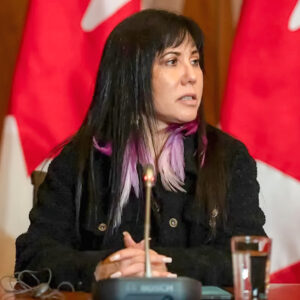
ONTARIO – The average length of three previous strikes ensued by college faculty is 21 days.
Thousands of students across Ontario have had their post-secondary education put on hold during the labour dispute between Ontario colleges and the union that represents college instructors for more than two weeks.
Regarding the main barrier fueling the dispute — 40 years ago the ratio was 70 per cent full-time and 30 per cent part-time for occasional contract teachers and those with full-time status. The ratio is now reversed, leaving many other faculty and students simply hoping for negotiations to continue.
“I hope both sides get back to the bargaining table as soon as possible for the benefit of all students,” said Elijah Williams, Indigenous Initiative Co-ordinator at Sheridan College.
So who is on strike?
The strikers consist of roughly 12,000 instructors that are represented by the Ontario Public Service Employees Union (OPSEU), which has more than 130,000 members and a $72 million strike fund.
The colleges are represented by the College Employer Council, which has negotiated on behalf of all Ontario colleges since 2008. Roughly 50 years ago, bargaining was done through a council whose members were appointed by the Minister of Education when colleges were first established. But today, the Employer Council is independent of government. In fact, government funding accounts for 44 per cent of all the revenue colleges raise from 52 per cent in 2008. But let us not forget that there are more than 200,000 students being negatively affected by the strike itself.
And what do the strikers want?
The OPSEU wants to see a reduction in the percentage of part-time instructors, which will ensure that part-time instructors make up only half of all college faculty. The union also wants more job security and a ladder hierarchy — the union says instructors should be hired based on their seniority and experience, and new teachers should only be considered if current qualified instructors turn down an opening. But the Employer Council has countered the union’s demands by considering this would add $250 million to the costs of running the schools. There is also disagreement over the union’s request that the contract should include academic freedom protection.
As the union versus the system rages on with the baseline being “it’s for the students” during negotiations, it is the students — and in particular post-secondary students from Six Nations — that are simply caught in the smoke.
“The strike has been putting me under a lot of pressure as a student,” said Tiffany Bomberry, Bachelor of Film and Television at Sheridan College. “It feels as though I’m being relied on to teach myself the content while I wait for this to blow over. I understand that some people may believe that if I really wanted to be in my program I’d stay focused and complete assignments according to their deadlines, but I work better in a school or classroom setting, surrounded by the content with people who also enjoy the subject.
“If I’m paying to go to school, then I’d like to get what I’m paying for; if not then at least a refund for the days missed. The whole situation is stressful for us students. What’s going to happen when the strike ends? I don’t even want to think about the time crunch.”
And not only is it difficult for students to keep focused and diligent while out of the classroom, they may also have concerns regarding the aftermath they will be left with after the strike finalizes.
“The strike has been very frustrating for the extended amount of time it has been happening,” said Alexandra Oliver, Police Foundations at Sault College. “I understand why the professors are protesting, and they have a right to, I just wish it wouldn’t affect my education as much as it has. The work load in college is large so any missed days can be hard to catch up, considering we are on week three of the strike you could imagine how much students will be behind when finally returning to class. It is very stressful, I have heard that other students have thought about dropping their semester, if the strike goes on longer than a month.
“It’s hard not to be worried about our studies. I do not want my school year being extended into the summer which has been talked about in articles pertaining to the strike. Considering that I have a summer job, and my lease for my apartment is up in May, how am I expected to go to class when I don’t have a place to live? I want to be in class, I want to be learning. I’m trying to stay optimistic that the colleges and the teachers will come to an agreement and I can get back to class.”
Yet there are some students that understand the side their instructors are on, but are still finding their studies difficult to manage.
“I don’t mind the strike because I believe the reasons why they are striking are good,” Samuel Williams, Sheridan College. “It’s affecting me as a student because I have no idea what is going on in my classes except for the work we were given before the strike. I just hope the graduating students this year are able to achieve the learning outcome for this semester on time without needing extra coursework.”
Thousands of students have already signed a petition asking for fee refunds of $40 for each day that the strike continues. However, the government has said that it hopes a short strike will minimize lost class time and refunds will not be necessary.
But rumours of the strike lasting for months after failed negotiations is up in the air and may counter those hopes in future. A better and more pliable solution to help refund students will need to be found.






